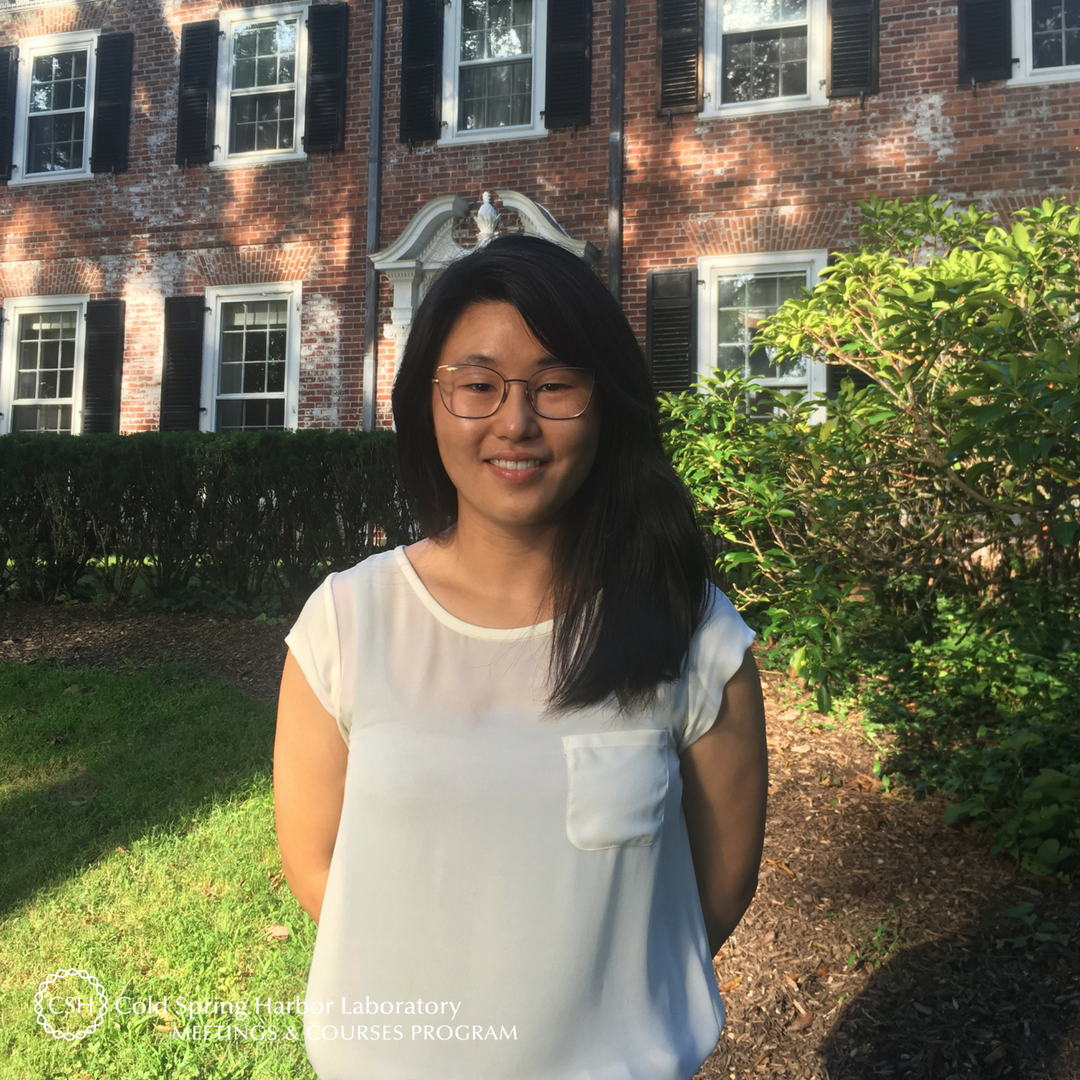Meet Salma Ferdous of Emory University. A PhD candidate and member of John Nickerson’s lab in the Emory Eye Center, Salma made her CSHL debut via the Chromatin, Epigenetics and Gene Expression course.
What are your research interests? What are you working on?
My research is focused on the visual system, specifically the retina which is a neurosensory tissue in the back of the eye responsible for vision. I study an epigenetic protein called Lsd1 and its role in proper retinal development because it could be a therapeutic target for a pediatric ocular cancer called retinoblastoma.
How did you decide to make this the focus of your research?
During college, I did a summer internship at The Retina Foundation of the Southwest in Dallas, TX where I tested patients with blinding disorders for visual problems. That internship made me realize how few treatment options are available for different forms of blindness and visual disorders. Emory University has an outstanding ophthalmology department and Dr. Nickerson was looking for a graduate student to explore a new project in the lab so it was a perfect fit!
How did your scientific journey begin?
My 8th grade science teacher Ms. Roden was a huge inspiration. She always encouraged me to ask questions outside of the scope of the assignment or project and really fostered my scientific curiosity. Afterwards, that curiosity was enhanced by my high school IB science teacher, Ms. Katavic, who taught me for 2 years and ultimately encouraged me to pursue a neurobiology degree in college.
Was there something specific about the Chromatin, Epigenetics and Gene Expression course that drew you to apply?
The course covers specific techniques that I wanted to learn and apply towards my own project: Chromatin immunoprecipitation (ChIP) combined with DNA sequencing (ChIP-seq) and Electrophoretic Mobility Shift Assays (EMSAs). These are techniques not currently used in my laboratory but would be very valuable for my project. Also, the invited lecturers for this course are game-changers in the fields of genetics and epigenetics so learning about their research firsthand was a fantastic opportunity.
What and/or how will you apply what you've learned from the course to your work?
The two techniques I mentioned above will allow me to determine exactly where the Lsd1 protein binds to DNA and how tightly this binding occurs. Ultimately, I will be able to determine which genes are being controlled by Lsd1 and in the case for retinoblastoma, how the inhibition of Lsd1 may decrease gene expression to prevent the spread of the tumor.
What is your key takeaway from the course?
The key takeaway from this course for me were the new techniques that I learned. In theory, you can learn a technique by reading a protocol or the method section of a paper, but having someone show you step-by-step how to complete the experiment makes the entire learning process so much easier. The instructors and TAs of the course were very friendly and helpful, and always willing to answer questions. Now I feel confident in my ability to perform experiments solo when I’m back at Emory.
If someone curious in attending this course asked you for feedback or advice on it, what would you tell him/her?
Whether they are looking to learn specific techniques for their project or general information about genetics and epigenetics, I would highly encourage anyone to attend this course. It is very intense with long hours, but you have the very rare opportunity to engage with people who are trailblazers in their respective fields. The quality of seminar speakers and instructors is unparalleled, and having the chance to listen to their presentations--and afterwards have dinner with them--is truly unique to this course.
What do you like most about your time at CSHL?
CSHL is located on a beautiful campus and, during the course, the instructors scheduled a boat trip where we spent an entire Saturday afternoon soaking up the sun and swimming! We also participate in a friendly “Plate Race” against the Yeast Genetics & Genomics course where we ran a relay race carrying 40 yeast agar plates. Though we lost the race, it was so much fun cheering for each other and chanting “GeneX, GeneX!”
Salma received a scholarship from the National Cancer Institute (NCI) to cover a portion of her course tuition. On behalf of Salma, thank you to NCI for supporting and enabling our young scientists to attend a CSHL course where they expand their skills, knowledge, and network.
Thank you to Salma for being this week's featured visitor. To meet other featured scientists - and discover the wide range of science that takes part in a CSHL meeting or course - go here.
Photo: Salma Ferdous









